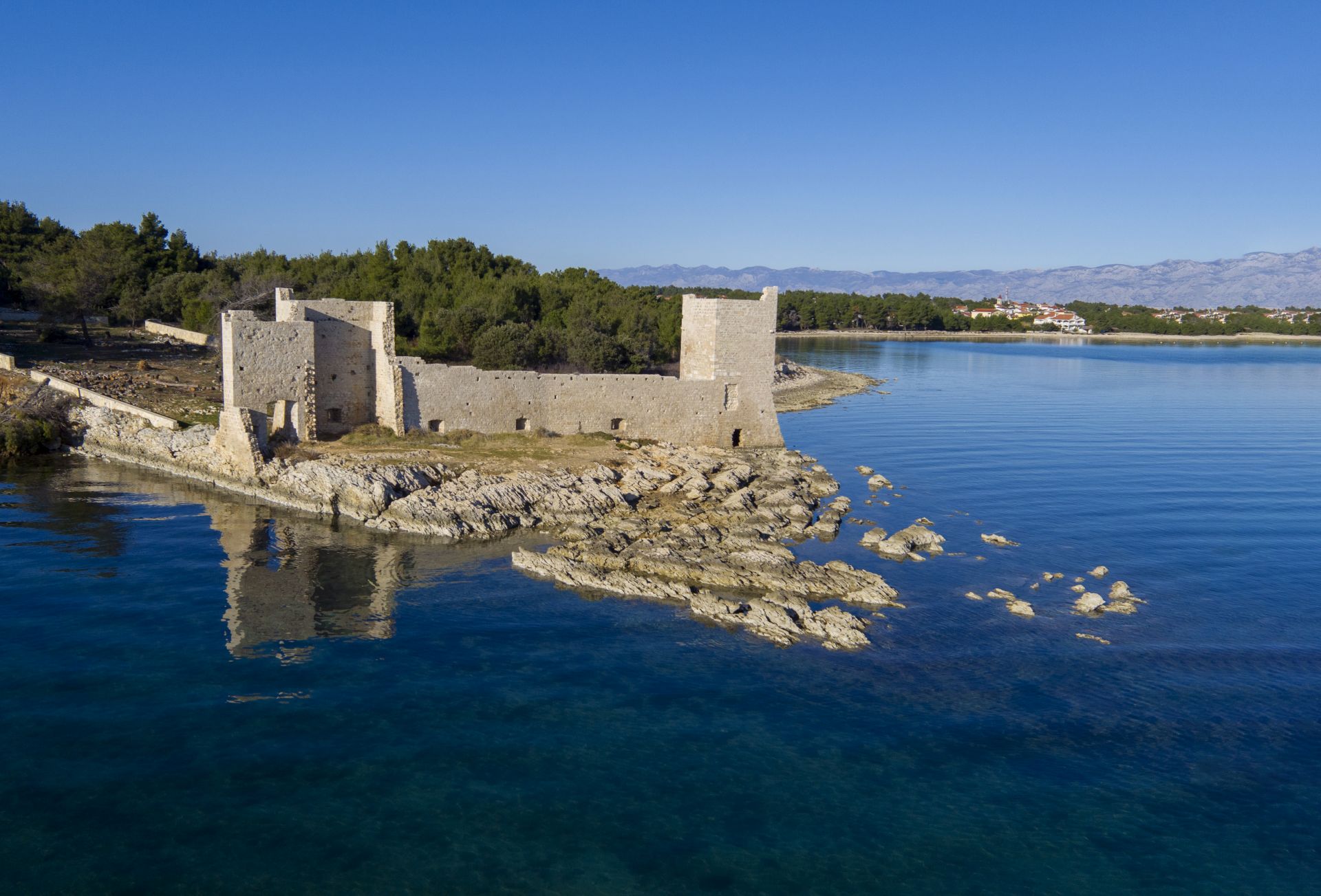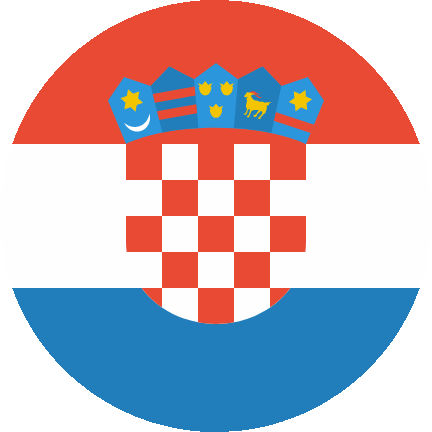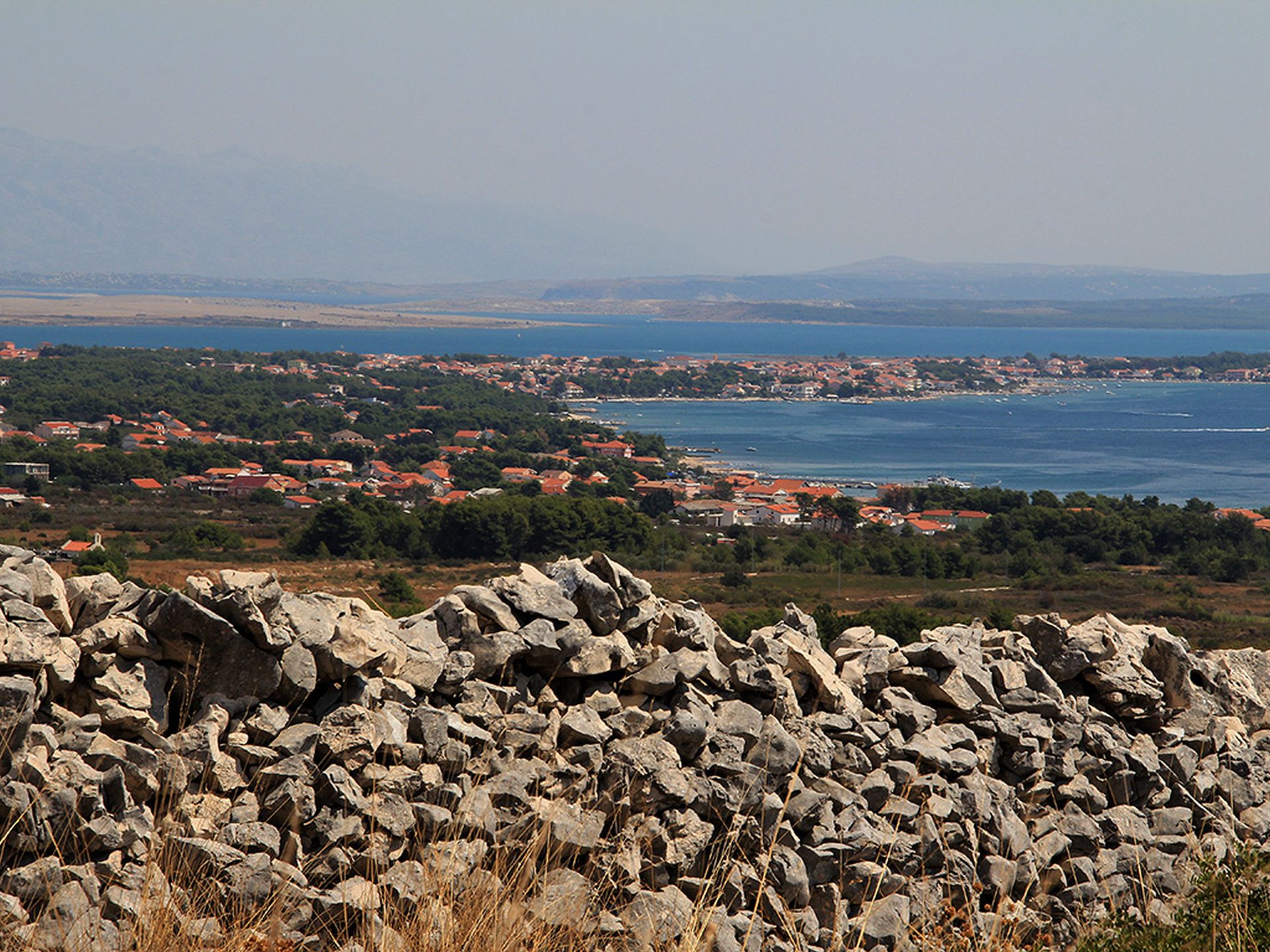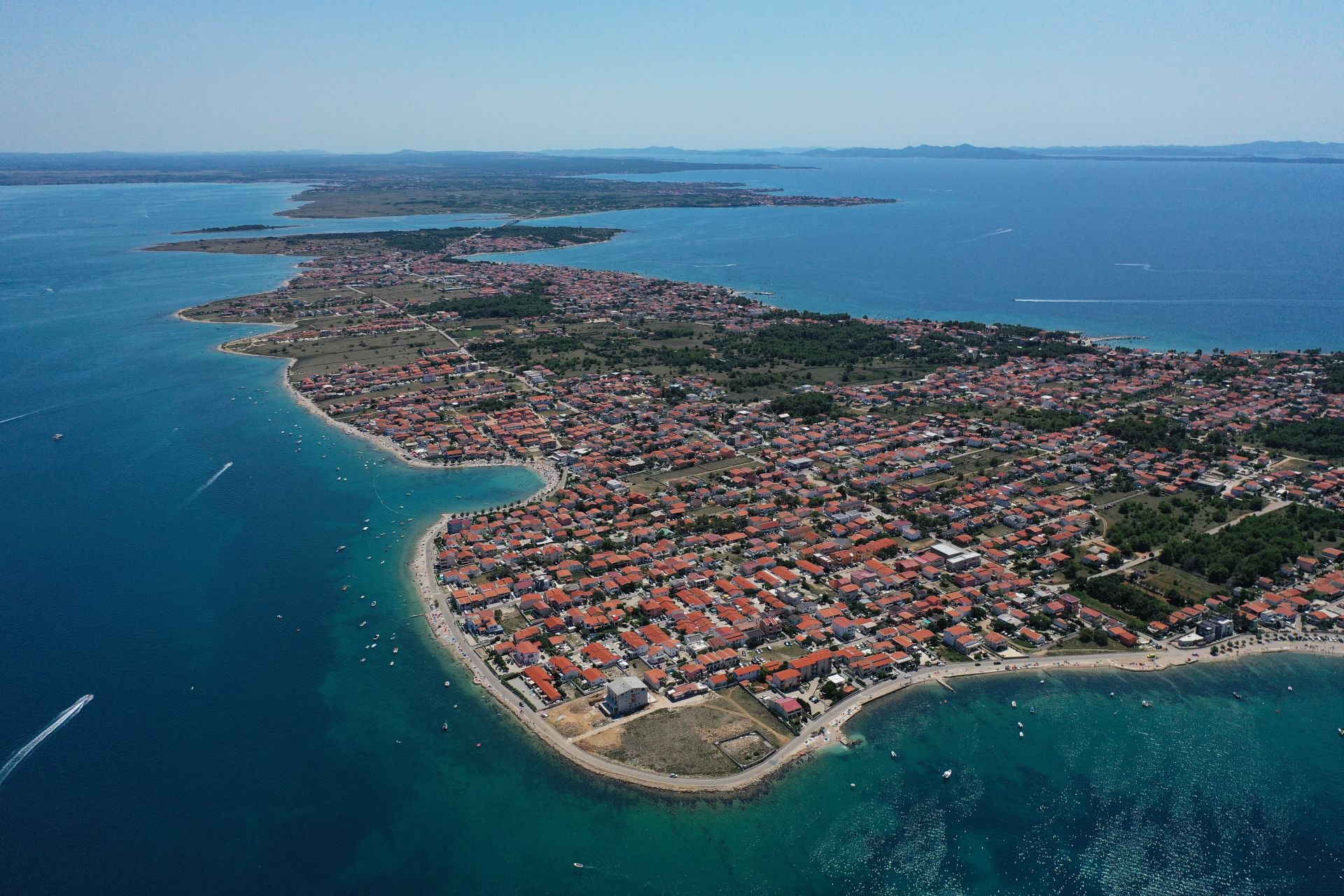
Did you know?
Repurchase
In 1903. people of Vir, a colony until then, through their proxies Ante Vučetić and Mate Subotić, began negotiations with the descendants of the Bakmaz family on the purchase of the island for 89 families who lived on the island at that time.
Prehistoric and Roman times
Based on the archeological finds, the first inhabitants of the island of Vir were the Liburnians, an Ilyrian tribe, which inhabited this area from the 9th century BC. From that period there are three sites from the Iron Age that belonged to the Liburnians. Gradina on the hill of St. George (Bandira), Gradina in Gaj in the northern part of the island and grave remains on the way Gračić-Križice-Gajine. Many marine archeological sites around Vir also testify from that time. The most significant and the oldest one was found near the island of Maun from 3-4 century BC with Greek-Italian amphorae that accidentally, from the seabed raised by a fisherman from Vir. The second site was in Gaz, where parts of ancient necropolis were discovered, while the newest site of a sunken ancient ship was recently discovered in the sandy mud of Srpljica bay. Based on the archeological finds, the first inhabitants of the island of Vir were the Liburnians, an Ilyrian tribe, which inhabited this area from the 9th century BC. From that period there are three sites from the Iron Age that belonged to the Liburnians. Gradina on the hill of St. George (Bandira), Gradina in Gaj in the northern part of the island and grave remains on the way Gračić-Križice-Gajine. Many marine archeological sites around Vir also testify from that time. The most significant and the oldest one was found near the island of Maun from 3-4 century BC with Greek-Italian amphorae that accidentally, from the seabed raised by a fisherman from Vir. The second site was in Gaz, where parts of ancient necropolis were discovered, while the newest site of a sunken ancient ship was recently discovered in the sandy mud of Srpljica bay.In Roman times, Vir was connected by the road to the mainland. That road (Via Communis) went from Vir via Privlaka to the town of Nin (Aenona) the administrative center. The remains of that road are visible at cape Kulina in Privlaka. In the area of Gaz, in Privlaka side, a smaller complex of Roman architecture was found, preserved in the foundations, consisting of a harbour and a pier and the remains of a former saltworks. No remains of Roman settlements were found in Vir itself.
Vir in the Middle Ages
At the beginning of the Middle Ages, Vir became closely connected to the town of Nin, where King Petar Krešimir IV ruled. In the area of the island of Vir, until 12-13. century, the churches of St. Nicholas and the church of St. George were built in the place of the current parish church of St. George in the center. In the 13th and 14th ct. the parish and cemetery church of St. John was built, and in the pre-Turkish period also the little church of St. Martin in Smratine. After the arrival of the Croats and the period of the first Croatian state dates the first written information about the island of Vir. The island of Vir is first mentioned in a gift from King Petar Krešimir IV from 1069. The deed of donation, better known as „Mare nostrum Dalmatikum“ written in Nin, testifies about „the gift of the island of Maun, where on the east side is placed the island which is called Vir in Croatian“, to the Benedictine monastery of St. Krševan in Zadar. Vir is also mentioned here for the first time as an island, not a peninsula as in earlier data. Since 1102. on the basis of the „Pacta Convente“, this area belongs to the Croatian-Hungarian Empire, and Nin where Vir also belonged to, belongs to this dynasty until the time of the Venetian administation. Venice had great efforts to rule the Adriatic coast, primarily the city of Zadar, with which it had a historical rivalry. During one of the attacks on Zadar in 1313., condottiere Almacije de Limolis from Catalonia in the sevice of Venice, chose Vir to rest during the attack. He stayed in Vir with thousand of good gunmen, a thousand infantrymen with long spears and a thousand of archers, and after eight days he set out from Vir to Zadar which he conquered. Therefore Vir was conquered by Venice. In 1329., Nin, like other Dalmatian towns, was placed under the proctecorate of Venice.
The first theory about the construction of Kaštelina, a fortress in the Kozjak area, is based on the statements of Lucijano Marčić, who says in his book: „At the beginning of the 16th century, the Turks appeared in the area of Nin. In one of their many conquests on these areas, in fear of falling the town of Nin to the hands of Turks, the local populations decided to demolish Nin in order to prevent the possibility of conquering Nin and thus create a strong base for the Turks for further conquests. After the destruction of Nin, in 1502. in Venice it was discussed about the restoration of Nin i.e. construction of a new fortress in Vir as an alternative. Since Vir stood out as a very important point in the defense against the Turks, in the relations of Venetian captains in Zadar duing the 16th century, the second theory of the construction of Kaštelina dates from that time. The last theory about the construction of Kaštelina says that the construction was carried out during the reign of the Venetian geneal proveditors for Dalmatia: Francesco Molina in 1623. and Antonio Pisano in 1626. This is evidenced by the embedded coats of arms of their families above the front door and local family Grisogono. Anyway, it is indisputable that the fortress served as a defense against the Uskoks and the Turks, and as a shelter for the local population. The Kaštelina had two towers, built on three floors. On the north tower from the west side a winged Venetian lion is seen, the symbol of Venice. In the lower part there are eight loopholes, carved out of stone. Above the entrance door of the south tower three different coats of arms are built, carved in hard stone. The coats of arms belonged to the Venetian families Molin, Michiel and Grisogono.
From 16th to the 19th century
At the time of the Turkish conquests, Vir was highlighted as an important strategic center for the city of Nin and its surroundings, however despite its importance, besides the disagreement of the Zadar military commander, the Captain of Zadar under whose command was also the crew of Nin, Vir was leased in the 16th century. The general proveditor Grimani assigned Vir to the cavalier Vid Matasović who committed to pay the Venetian government one-eight of his annual income, which was about 1500 lira a year. At that time, most places in Zadar hinterland were abandoned and displaced, so for example in 1579. in Vir there were only 36 people, while in 1603. there were 130 inhabitans. Who were the inhabitans of Vir at that time is still unknown, because today's population began to inhabit from the end of the 16th century ( Budije who came from Privlaka ). On October 16th in 1634. The Venetian doge granted the island of Vir to the Crnica family, who committed to pay 200 ducats a year. A few years later, Vuk Crnica redeemed the island. The Crnica family was a military family which received a noble title from Venice for its sevices in defending the area of Nin. Crnice lived in the area of Zadar and Vir where they had a palace on the coast, where today's building of the Municipality of Vir is located. In 1670, Crnice renovated the church of St. Nicholas in Vir, which foundations were covered with asphalt in 1975. At that time, the settlement of the island with today's population gradually began, which was primarily engaged in cattle breeding and farming. It is interesting that the Crnica family forbade the construction of houses near the sea so Vir didn't take the characteristic form of settlements as other islands. According to the legend, the people of Vir wanted the village to be formed under a hill, near today's lighthouse, to protect it from bora, however it was forbidden by Crnica. At the end of the 18th century, the situation in Vir gradually stabilized and two new settlements, Lozice and Torovi, were formed. The Žepina family first moved to Lozice, followed by the Buškulić, Radović and Olić families. On the other hand, the families of Kapović, Vučetić and Bašić settled in Torovi.
In that period, Vir was still in a possession of the family Crnica, but small parts of the land, primarily houses and backyards, have become the property of other families. In the second half of the 19th century, Vir came into the possession of the Bakmaz family. According to the first legend, the Bakmaz family bought the island of Vir from the Crnica family, while according to the second legend, Crnica lost from Bakmaz in a card game and handed over the ownership of the island as a compensation. Until 1880., the name Bakmaz was written in the files of the ownership of the island, while after that the name Obradović was written. It is obvious that after the death of Bakmaz Vir was inherited by his daughter Augusta Obradović and his granddaughter Marija Obradović.
Redemption of the island
In 1903, the people of Vir, the former columns, through their proxies Ante Vučetić and Mate Subotić, began negotiations with the descendants of the Bakmaz family on the purchase of the island for 89 families who lived on the island at that time. Until then the owner of the island Augusta Obradović, born Bakmaz, decides to sell the island. The island was bought by 89 families for the price of 12 000 krunas for 1/89 of the share. The contract was signed on the 5th of August 1908., and the registation was made on August 13 of the same year. In honour of this event, every year on August 13, the tradional „Vir night“ is celebrated on the island, the most important cultural and entertainment event during the tourist season. On the 13th of August 2013, a memorial plaque was solemnly placed in honour of the event where it says: „On the 13th of August 1908, Vir families, 89 of them, redeemed the island of Vir from the landowners. Realizing this century-old dream, this island became theirs, and they, the columns so far, laid the foundation of Vir self-government. The island was redeemed by these families: Babajko, Bašić, Begonja, Budija, Buškulić, Čepić, Ćepulo, Dabičić, Grlić, Gržeta, Kapović, Kera, Lavić, Liverić, Matešić, Olić, Orlić, Peruza, Radović, Rukavina, Subotić, Vučetić and Žepina. In honour of this event and as a sign of gratitude to our ancestors, this memorial was placed by the Municipality of Vir.“
ABOUT VIR
Island of Vir is situated at the very end of the northwestern part of Zadar County, only 25 kilometers from the regional center of Zadar, the ancient Dalmatian city and its historical metropolis in long and various times.
SIGHTS
There are many sights on Vir, each of which has a special feature for this island.







